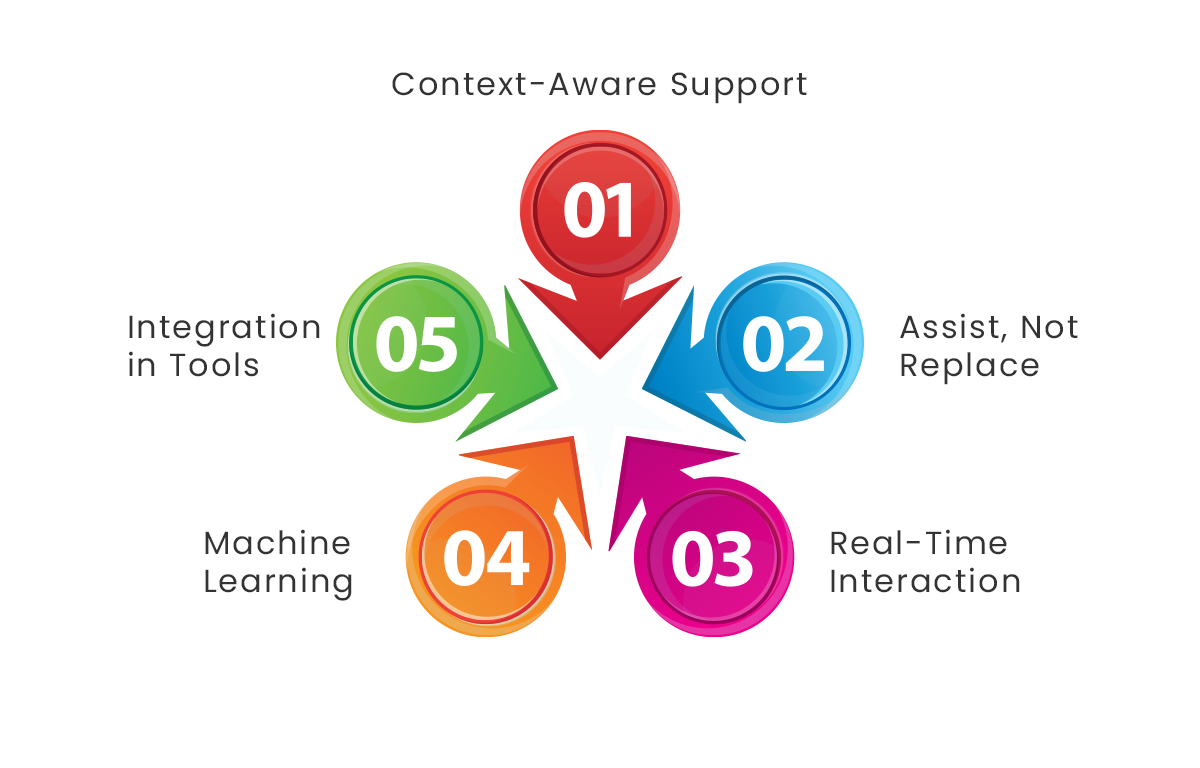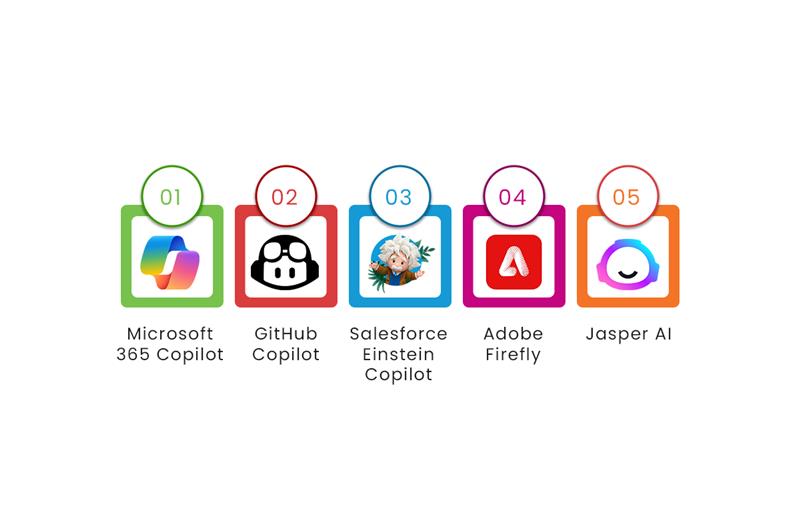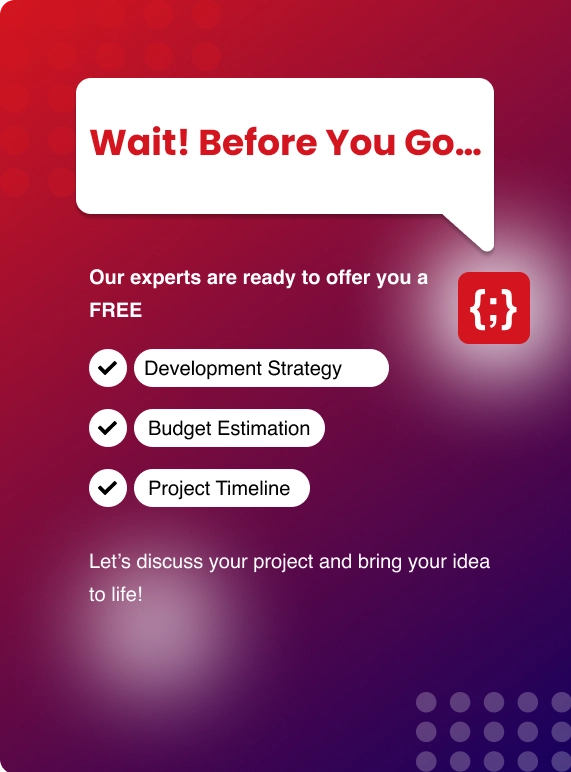If you’ve been hearing about AI copilots and AI agents lately and wondering what exactly they mean, you’re not alone.
These terms pop up a lot as AI technologies become more common in workplaces, apps, and devices. Even people who use AI-powered tools daily sometimes get confused because both concepts involve artificial intelligence helping humans.
But there’s a clear difference, mostly about how much control the AI has and how it interacts with us.
AI copilots assist you in real time, enhancing your decisions with timely insights, while AI agents take a step further – they proactively understand your patterns, anticipate needs, and offer solutions across applications, continuously learning to serve you better.
I want to help you understand both clearly — what they are, how they work, when you might want one over the other, examples you probably already use, and why these distinctions matter for businesses and everyday users.
Let’s break it down step-by-step, in a way that's easy to follow, just like explaining it to a friend.
What Is an AI Copilot?
The pilot controls the plane, making important decisions. The copilot isn’t just a passenger — they help the pilot by handling communications, monitoring instruments, and suggesting what to do next. The pilot is always in charge, but the copilot is a crucial assistant.
An AI copilot works the same way, but in the digital world. It’s an AI-powered assistant designed to work alongside you, making your tasks easier without fully taking over. It offers suggestions, helps with routine parts of your work, and automates small or repetitive steps — all while you stay in control.
How AI Copilots Work?
Understanding how AI copilots actually work can give you a clearer picture of how they fit into your daily tasks or business workflows. They’re not magic black boxes but carefully designed helpers that combine advanced technology with a focus on human collaboration. Here’s what makes AI copilots tick and why they are such useful teammates.
- Context-Aware Support: One of the standout features of AI copilots is their ability to understand context. This means they don’t just throw random suggestions at you; they pay attention to what you’re doing and tailor their help accordingly.
For example, if you’re working on an email, the copilot reads what you’ve written so far and suggests a polite way to close your message or better phrasing to make it clearer. Writing code? The copilot looks at the surrounding lines and predicts the next snippet you might want to write, speeding up your coding significantly.
This context awareness comes from training large language models and AI systems on massive amounts of diverse data. These systems learn patterns in language and tasks so they can guess the most probable or useful next steps, but always in a way that fits your current work.
In practice, this means you get help that feels like it gets what you’re trying to do rather than interruptions that slow you down. This kind of “in-the-moment” assistance is what makes copilots different from generic AI chatbots that don’t have task context. - Assist, Not Replace: Rather than replacing you, AI copilots are designed to assist you. Think of them as smart tools that take on the boring, tedious parts of your work—like formatting, repetitive wording, or routine calculations—so you can focus on the thinking, deciding, and problem-solving parts.
For instance, when drafting a report, the copilot might automatically summarize long paragraphs or fetch relevant statistics based on what you write. It won’t decide the final message or conclusions—you still do that—but it helps by reducing the grunt work.
I’ve noticed many people feel more comfortable using copilots once they realize these are collaborative helpers, not “takeover” machines. You keep full control, with copilots serving as fast, knowledgeable sidekicks.
- Real-Time Interaction: One feature that sets AI copilots apart is real-time interaction. Unlike an AI you ask a question once and wait for an answer, copilots work alongside you continuously.
Imagine you’re typing in a document or writing code. The copilot watches your updates and offers suggestions right as you work. Whether it’s fixing grammar, completing a sentence, or hinting at a next step in your project, these prompts appear instantly.
This immediate responsiveness makes working with copilots feel fluid and dynamic. You’re not waiting or switching apps—the help comes to you exactly where you’re focused. It resembles having someone silently reading over your shoulder and offering tips just when you need them. - Machine Learning: AI copilots don’t stay static. They learn and improve as they work with you using machine learning techniques.
It “remembers” your preferences, style, and common corrections. Over time, this personalized learning makes the AI’s suggestions more accurate and aligned with how you like to work.
For example, if you prefer concise sentences or a casual tone in emails, your copilot will start tailoring its outputs to match that style better. It’s almost like training a colleague to understand your way of working without explicitly telling them each time.
This ongoing learning is important because it makes the AI feel less generic and more like a personalized assistant tuned to your workflow. - Integration in Tools: AI copilots don’t usually come as standalone apps you have to open separately. Instead, they integrate right into the tools you already use every day.
Take Microsoft 365 Copilot as a great example. It lives inside familiar apps like Word, Excel, and Outlook, so you don’t have to learn a new interface or workflow. When writing a Word document, the copilot can help craft text, generate tables, or summarize information without leaving the document.
Because it’s embedded, this integration reduces friction—you never have to stop your work to “call” the copilot. The AI feels like a built-in part of the app, making assistance natural and seamless.
I’ve seen firsthand how this tight integration encourages people to use AI more because it fits into their existing habits rather than asking them to switch tools or learn new software.
I’ve found in my own experience that AI copilots are incredibly helpful when you want faster results but still want to guide the final output based on your expertise and needs.
Ready to master AI Copilot integration?
Dive into our in-depth guide from Zenesys and learn proven strategies to seamlessly integrate AI Copilots into your workflow.
Explore the GuideExamples of AI Copilots
These might already be part of your daily tech tools:
- Microsoft 365 Copilot: Assists with writing emails, summarizing long documents, creating presentations, or analyzing data inside popular Microsoft apps.
Microsoft Copilot had 33 million active users across Windows, apps and website. - GitHub Copilot: GitHub Copilot suggests code snippets automatically as developers write programs, reducing time spent on repetitive coding tasks.
- Salesforce Einstein Copilot: Supports sales teams by providing intelligent suggestions on how to approach customers or manage follow-ups.

- Adobe Firefly: Adobe Firefly helps creatives by recommending design elements or automating parts of the creative process.
- Jasper AI: Assists marketers and writers in creating content rapidly with AI-generated ideas and drafts.
Want to create your own AI Copilot?
Partner with Zenesys to build a custom AI Copilot tailored to your business workflows—from code assistance to smart automation.
Build Your AI CopilotWhat Is an AI Agent?
Think of AI agents as digital robots that can carry out entire workflows without needing you to intervene constantly.
How AI Agents Work
AI agents are designed to do much more than just follow orders; they act like independent digital workers who can manage tasks with little to no human intervention once they’re set up. Let’s break down the main features that make AI agents stand out and why these traits matter.
- Autonomy: Autonomy means that an AI agent can assess its environment and decide what to do next on its own, without needing a person to tell it every single step.
Imagine a self-driving car. It doesn't wait for someone to tell it “turn left” or “brake” every second. Instead, it constantly monitors road conditions, traffic lights, other cars, and pedestrians. Based on all this information, it makes real-time decisions to drive safely and efficiently.
In the digital world, AI agents do something similar. For example, a customer support agent can read incoming messages, understand what a customer needs, and decide how to reply or whether to escalate the issue—all without waiting for a human to guide each response. You can build this yourself or use tool such as Intercom and their alternatives to do the job.
This autonomy lets agents work efficiently in dynamic environments where waiting for human input at every step would be slow or impossible. They keep things moving, reacting instantly to changes or new information. - Learning and Adapting Over Time: AI agents improve as they go. They use powerful machine learning techniques to analyze the data and feedback they receive, which helps them adjust how they behave and make better decisions later.
For instance, an AI agent might start handling customer questions with scripted responses. But over time, as it processes thousands of conversations, it learns to understand nuances in customer tone, recognize common problems faster, and predict better responses.
This learning is ongoing and usually happens without needing humans to manually reprogram the agent. It means the AI agent gets smarter, more accurate, and more helpful with experience—just like a human who learns from doing a job repeatedly. - Targeted Tasks: AI agents often focus on repetitive or structured tasks that don’t require deep creativity or subjective judgment but do demand consistent accuracy and speed.
Common examples include:- Sorting and responding to customer support tickets
- Processing and matching invoices with purchase orders automatically
- Managing inventory levels by checking stock and placing orders when needed
- Monitoring IT systems and resolving common technical issues without needing a human technician
By taking over these types of tasks, AI agents free people from boring, time-consuming work so they can focus on higher-level problems and decisions. - Problem-Solving and Handling Exceptions: AI agents are not just mindless automations; they also have built-in problem-solving abilities.
Say an AI agent is processing loan applications on behalf of a bank. For routine cases that fit straightforward rules, it can approve or reject instantly. But if it encounters something unusual—like a missing document or conflicting data—it knows when to escalate the case to a human expert instead of making a risky decision. Leveraging lending automation further streamlines this process, allowing banks to handle high volumes of applications efficiently while reducing manual errors and improving overall decision speed.
This kind of smart fallback ensures AI agents maintain quality and safety in their work, combining fast automation with careful human oversight when needed.
A solid real-world example is Waymo’s self-driving cars, which navigate roads and make driving decisions without anyone controlling them directly. Another might be an IT support agent that automatically fixes common tech problems as they pop up.
Curious how AI agents can transform your business operations?
Explore real-world use cases and benefits in our detailed blog at Zenesys. Learn how industries are using AI agents for automation and efficiency.
Read the Full BlogExamples of AI Agents
AI agents handle bigger jobs solo. Some well-known examples:
Navigate city streets independently, making driving decisions moment to moment.
Automates customer support across multiple channels, answering common questions without human agents.
Automatically finds potential customers and handles contacting them.
Provides automated IT and HR support, resolving common issues without humans stepping in.
Agents work best where tasks are rule-bound and repetitive enough so they can be fully delegated to AI.
Skara AI Agent (Salesmate)
Skara AI Agent Automates sales, marketing, and support workflows — qualifying leads, booking meetings, and resolving customer queries across multiple channels in real time.
Thinking about automating tasks with smart AI agents?
At Zenesys, we build intelligent AI agents that can handle repetitive workflows, take action, and free up your team for higher-value tasks.
Let’s Build Your AI AgentKey Differences Between AI Copilots and AI Agents
Here’s an easy way to see the basic differences side-by-side:
| Feature | AI Copilot | AI Agent |
|---|---|---|
| Level of autonomy | Works collaborating with human users | Acts independently without continuous input |
| Decision making | Human makes final decisions, AI suggests | AI makes decisions within set parameters |
| Task scope | Assists in parts of tasks or workflows | Carries out entire tasks or workflows |
| Learning method | Learns from interaction with users | Learns autonomously from data and environment |
| Best for | Creative, complex, nuanced tasks requiring judgment | Routine, repetitive, rule-based automation |
| Examples | Microsoft 365 Copilot, GitHub Copilot | Waymo autonomous cars, Salesforce Agent Force |
| Human involvement | Continuous human oversight is required | Minimal after initial setup |
Why Does This Difference Matter?
Understanding these differences can save you frustration later when deciding which kind of AI you need.
If you want to keep in control and use AI to boost your creativity or speed for complicated tasks, AI copilots are ideal. They support your decisions without replacing you.
If you want to automate routine or standard tasks entirely, so you don’t have to think about them, then an AI agent is your choice. It runs on its own and frees up your time.
In the business world, many companies start by introducing copilots to help employees adapt and be more productive before moving toward agents for full automation of standard workflows.
These copilots listen and respond to you in real-time, offering help but never making final decisions independently.
Use Cases and Industry Applications
| Industry | AI Copilot Use Case | AI Agent Use Case |
| Customer Support | Suggests best replies to complex queries | Automatically answers straightforward questions |
| Software Development | Suggests code, offers documentation | Runs testing and deploys code automatically |
| Finance | Helps analyze financial reports | Matches invoices with purchase orders autonomously |
| Healthcare | Summarizes medical records, assists diagnosis | Schedules appointments, manages reminders |
| Education | Helps create lesson plans or grading recommendations | Automates student enrollment and notifications |
| Marketing | Generates content ideas and drafts | Sends scheduled campaign emails automatically |
Common Questions About AI Copilots and Agents
Q: Can an AI copilot become an AI agent?
A: Sometimes yes. Some AI tools start as copilots with human-in-the-loop guidance but evolve toward more autonomous agent-like behavior as they gain confidence and accuracy.
Q: Are AI agents safe to use without supervision?
A: It depends on the complexity and risk of the task. For low-risk repetitive tasks, autonomous AI agents work well. For high-risk or complex decisions, human oversight is usually recommended.
Q: Can you use both copilots and agents together?
A: Absolutely. They complement each other well. Agents handle routine automation, while copilots support humans on creative or strategic tasks.
Final Thoughts
I’ve often seen the confusion around these terms diminish once you think of AI copilots as digital teammates working alongside you, and AI agents as digital workers performing tasks independently.
In everyday work, both have roles to play. If you want to keep your expertise in the driver’s seat while reducing busywork, a copilot is the right pick. If you want to automate a clearly defined workflow completely, go with an agent.
Together, these AI technologies are changing how businesses and individuals work by increasing efficiency, cutting down repetitive tasks, and helping us focus on what really matters.


.webp?lang=en-US&ext=.webp)

.webp?lang=en-US&ext=.webp)

